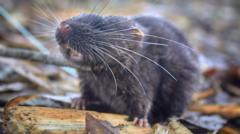In a groundbreaking expedition in the Alto Mayo region of Peru, scientists from Conservation International, alongside local indigenous groups, have discovered an astonishing 27 new species, which include an amphibious mouse with webbed feet and a unique blob-headed fish. These findings are part of ongoing efforts to document biodiversity in the Amazon rainforest, which is threatened by human activities such as deforestation and agricultural encroachment.
Trond Larsen, Senior Director at Conservation International, expressed excitement over the discoveries. He stated, "Discovering so many new species of mammals and vertebrates is really incredible, especially in such a human-influenced landscape." The expedition took place in a protected area that showcases diverse ecosystems and indigenous territories, emphasizing local involvement in conservation efforts.
Among the new species identified are a new type of dwarf squirrel, eight new fish species, three amphibians, and ten butterfly types. Notably, the blob-headed fish, a species of bristlemouth catfish, stands out due to its unusual enlarged head, which scientists found astonishing as the local Awajún people had already recognized its presence in their ecosystem.
The expedition also reported the finding of a new spiny mouse and an "amphibious mouse," a unique rodent species adapted to an aquatic lifestyle, known to consume aquatic insects. Such semi-aquatic rodents are among the rarest in the world, making this discovery particularly significant.
Yulisa Tuwi, an Awajún woman involved in the research, articulated the importance of the findings for her community, saying, "This report allows the Awajún to protect our culture, natural resources, and our territory." Local indigenous knowledge proves valuable in understanding the complexities of these ecosystems, as the Awajún have long lived in harmony with the flora and fauna of the area.
As conservation efforts continue, findings like these play a crucial role in both understanding biodiversity in the context of human impact and advocating for stronger environmental protections in vulnerable regions like Alto Mayo. The discovery of numerous new species may also serve as a reminder of the countless organisms yet to be identified and the importance of preserving their habitats.

















